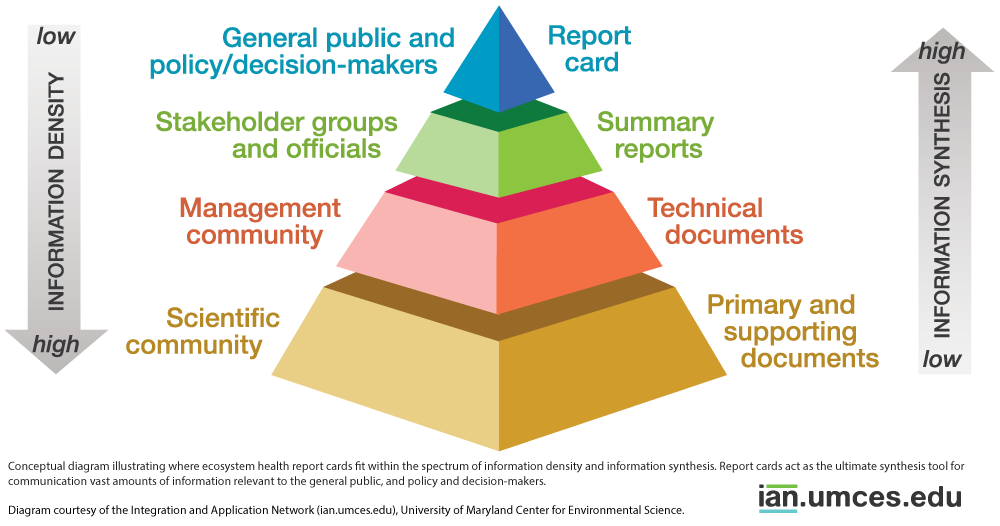Creating and Communicating Environmental Intelligence
Bill Dennison ·As part of the 21st International Riversymposium, I presented a keynote talk entitled “Creating and communicating environmental intelligence“. Elements of environmental intelligence include the following:
- The ability to acquire and apply environmental knowledge.
- The collection of information of environmental value.
- The ability to perceive your surroundings.
The word ‘environment’ is derived from a French word ‘environ’, meaning surrounding. The word ‘intelligence’ is derived from a Latin word ‘intelligere’ meaning to comprehend or perceive.

My definition of environmental intelligence is “Good science, effectively communicated in a timely manner.” But to get to environmental intelligence, I believe that you need the following four sequential steps:
- Observation Revolution: Data gathering capabilities are dramatically increasing. The ability of sensors and satellites to gather massive amounts of data has been increasing. The analogy is that simply increasing the amount of data is akin to increasing the amount of water coming out of a fire hose. Attempting to get a drink of water from a high pressure fire hose is difficult. You need to convert the data into information in order to be able to drink from the fire hose.
- Information Generation: Capacity for data analysis is increasing. Over the past couple of decades, significant advances have been made in handling “Big Data” emanating from the observation revolution. For example, the development of geographic information systems (GIS) has made mapping a widespread tool. In addition, various statistical and spatial analyses have aided in converting data into useful information.
- Knowledge Building: Synthesis and visualization techniques are emerging. The creation of environmental synthesis centers like the National Socio-Environmental Synthesis Center (SESYNC) in Annapolis, Maryland (run by the University of Maryland) and the National Center for Ecological Analysis and Synthesis (NCEAS) in Santa Barbara, California and (run by the University of California) are examples of institutions that have been created to build new knowledge.
- Environmental Intelligence: Good science, effectively communicated in a timely manner. Environmental intelligence is achieved when knowledge is effectively communicated for informed decision making. The timely dissemination of good science is enhanced with science visualizations, websites and science communications publications. Environmental report cards represent a way to share environmental intelligence to a broad public audience.
As an example of the data to information to knowledge to environmental intelligence transition that I invoked is a development of environmental report cards. This is illustrated with layers of a pyramid with primary and supporting documents on the bottom layer, technical documents on the second layer, summary reports on the third layer and the report card on the top layer. The higher up the pyramid, the more information synthesis and less information density occurs. This report card pyramid is like the data—to information—to knowledge—to problem solving pyramid used for environmental intelligence.

About the author
Bill Dennison

Dr. Bill Dennison is a Professor of Marine Science and Vice President for Science Application at the University of Maryland Center for Environmental Science.

